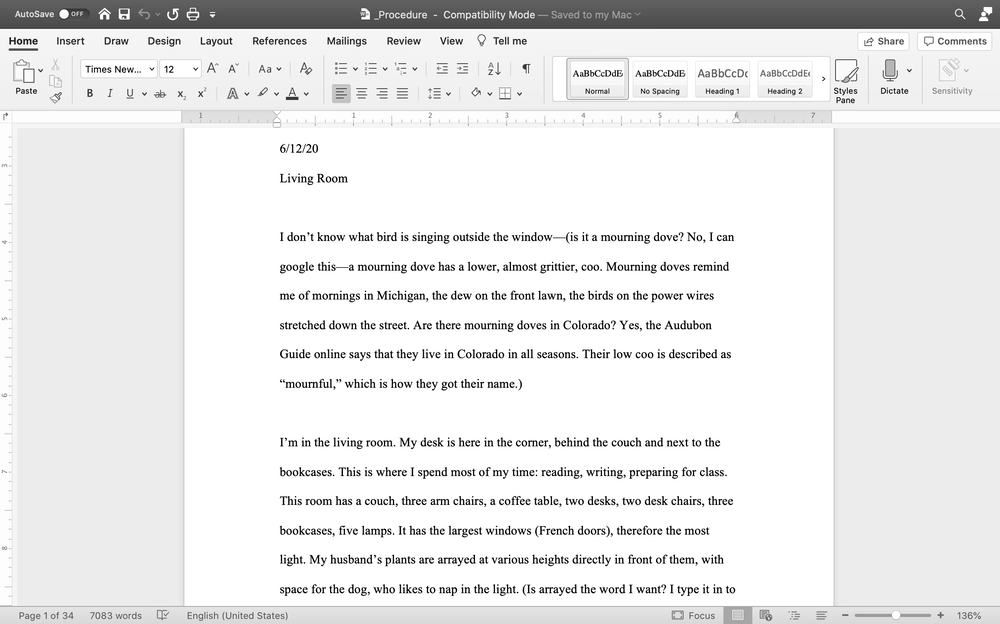
PROCEDURE
first performed on June 12, 2020
an apartment in Cheesman Park, Denver, CO
performed nine times in 2020
EMILY BARTON ALTMAN
Denver, CO
ebaltman.com
PROCEDURE
EMILY BARTON ALTMAN
“Procedure” draws on a Fluxus tradition of performing the mundane to explore the intersection of poetry and performance. The performance is based on a set of instructions that draws on routines to interrogate the performative aspects of dailiness and of everyday space. I define dailiness and the everyday as routinized actions that create or seek to create a stable relationship between human subjectivity and a set of key categories that are constitutive of subjectivity, including memory, temporality, and language itself. The instructions for the performance are as follows:
-
Sit in a room of my apartment and describe my sensory experiences with my eyes open. Write down any thoughts about the space that I have.
-
Then, close my eyes, and describe my sensory experiences again. Write down any thoughts about the space that I have.
-
Repeat in each room of my apartment, once a week on Fridays.
While the instructions focus on sensory experience, their generality allows for aspects of the external world to enter in a way that exceeds the focus on the senses. For instance, the first iteration of the performance immediately exceeded a strict interpretation of the procedure above in that it revealed the reliance on a tool—a laptop—in the performance, extending a strict definition of the sensory. Even attempts to strictly record the senses fail to record them accurately. In the Bedroom entry for June 12, 2020, for instance, the attempt to record sound instead becomes a recording of hearing loss and tinnitus.
In staging this procedure as a performance, I draw on the immediacy of the time and place where the performance occurs by registering details that often go unnoticed—a process that Caroline Bergvall describes as “writing in situ.” Bergvall writes that “[w]riting in situ is not so much writing away from one’s desk as explicitly subjecting one’s writing to a set of initially spatial, rather than linguistic, conditions” (242). While what is represented becomes obviously imbued with significance, what is absent or forgotten becomes equally significant, as both change with time and space. These changes reveal the gaps inherent in an in situ work and raise questions about memory and its fallibility. The impossibility to fully render every aspect of a place shows how bodies and language fail—not only to record sensory experience through distortions like hearing loss, but also to represent life as it happens.